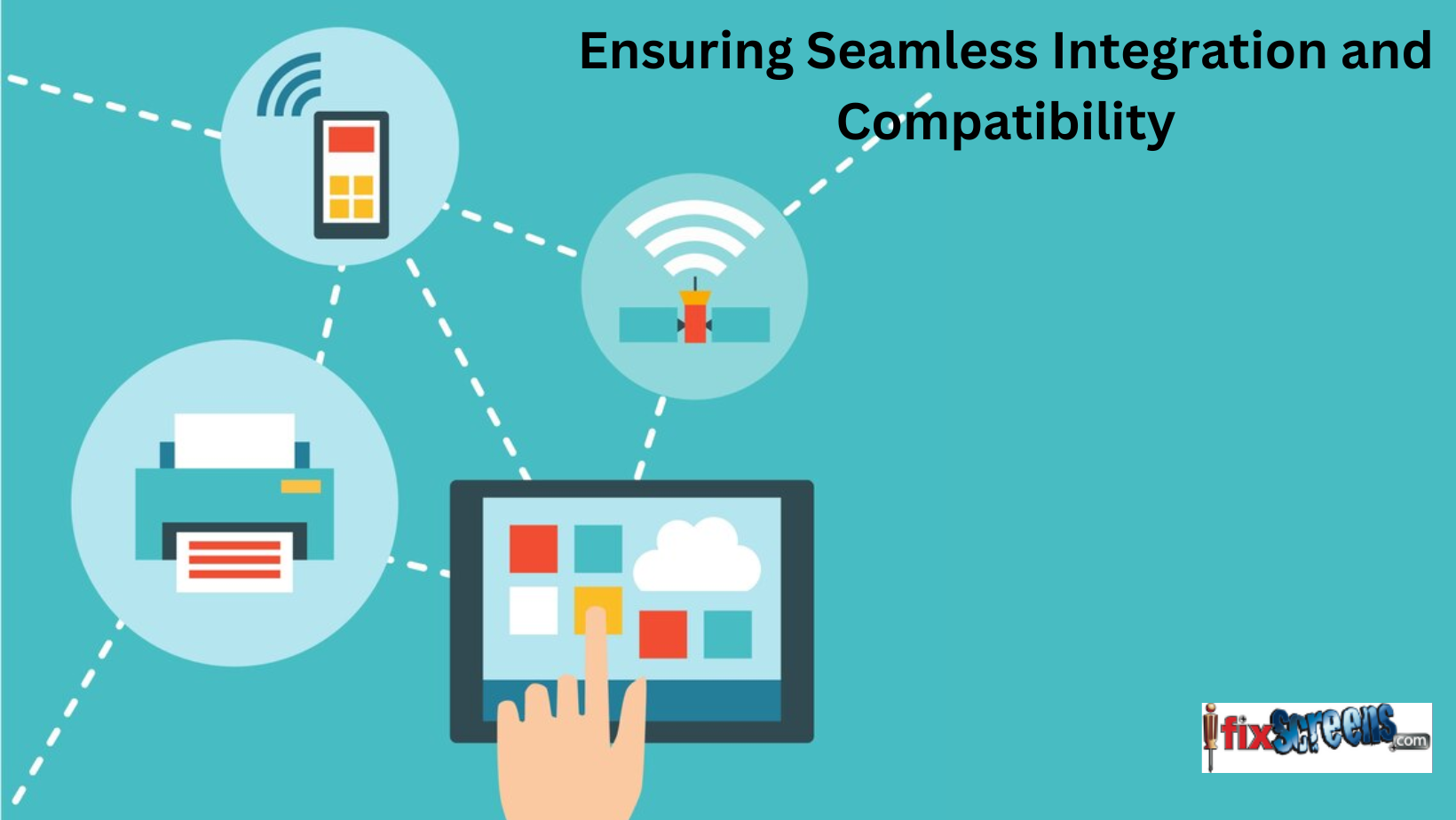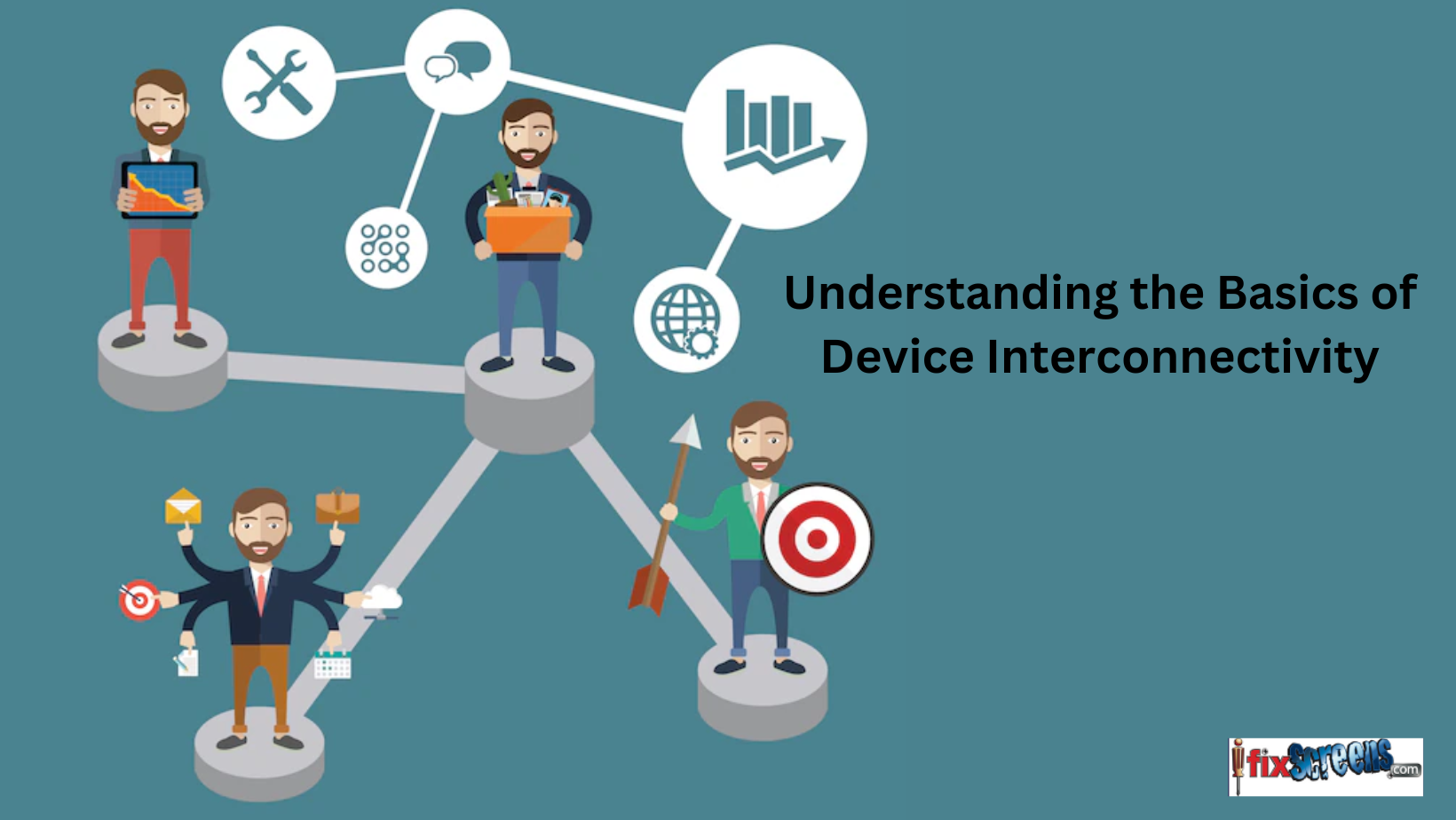Ensuring Seamless Integration and Compatibility: A Guide to Device Interconnectivity
In today's fast-paced digital world, the interconnectivity of devices is not just a convenience; it's a necessity. From smart homes to interconnected office environments, ensuring seamless compatibility and integration of various devices is crucial for efficient and effective operations. This guide provides insights and strategies to master device interconnectivity, making your tech ecosystem work together smarter.
Key Takeaways
- Device interconnectivity involves the connection and communication of digital devices through wired or wireless means.
- Wired connections (e.g., USB, HDMI) offer speed and security, while wireless connections (Wi-Fi, Bluetooth) provide flexibility.
- Communication protocols (e.g., HTTP, Bluetooth) and standards (Wi-Fi, Bluetooth standards) ensure effective data sharing.
- Compatibility requires matching hardware and software specifications between devices.

Understanding the Basics of Device Interconnectivity
Device interconnectivity refers to the ability of different digital devices to connect and communicate. This connection can be wired or wireless and involves various protocols and standards that ensure devices can share data and functionalities effectively.
Understanding the Basics of Device Interconnectivity involves comprehending the fundamental principles and technologies that enable different digital devices to connect and communicate. This understanding is crucial for creating a cohesive and efficient network of devices in a personal, home, or professional setting. Let's break down the key aspects:
1. Types of Connections
Wired Connections: These involve physical cables, like USB, Ethernet, HDMI, etc., to connect devices. Wired connections are typically faster and more secure but less flexible than wireless connections.
Wireless Connections: This includes technologies like Wi-Fi, Bluetooth, NFC (Near Field Communication), and Zigbee. Wireless connections offer greater flexibility and mobility.
2. Communication Protocols and Standards
Protocols: These rules dictate how data is transmitted and received over a network. Examples include HTTP for web data, Bluetooth for short-range wireless communication, and TCP/IP for Internet communications.
Standards: Developed by organizations like IEEE and IETF, standards ensure that devices from different manufacturers can communicate. Examples include Wi-Fi (IEEE 802.11) and Bluetooth standards.
3. Compatibility Requirements
Hardware Compatibility: Devices must connect with compatible ports or wireless technologies. For instance, a device with only USB-C ports won't directly relate to a USB-A device without an adapter.
Software Compatibility: Software and operating systems must be compatible to communicate effectively. This includes having compatible drivers, operating systems, and application interfaces.
4. Data Synchronization and Sharing
Synchronization: This involves ensuring that data across devices is consistently updated and in sync—for example, syncing contacts and calendars across a smartphone and a laptop.
Data Sharing: Refers to the seamless data transfer between devices, like streaming music from a smartphone to a Bluetooth speaker.
5. User Interface and Experience
Seamless Integration: The user interface should facilitate easy connection and management of devices. This can include automated setup processes, easy-to-navigate settings, and clear status indicators.
User Experience: The overall experience should be intuitive and efficient, minimizing user frustration and maximizing productivity.
6. Security Considerations
Encryption: Ensuring data transmitted between devices is encrypted to protect against interception and hacking.
Authentication: Implementing methods to verify the identity of devices and users, like passwords, PINs, or biometric data.
7. Interoperability Challenges
Manufacturer-Specific Ecosystems: Some manufacturers create devices meant to work primarily within their ecosystem, which can limit interoperability with other brands.
Legacy Systems: Older devices might not support newer technologies, protocols, or standards, making them incompatible with modern devices.
Understanding these basics of device interconnectivity is essential for anyone looking to create a network of devices that work harmoniously. It involves a blend of technical knowledge, awareness of current standards, and a focus on security and user experience.

Challenges and Solutions in Device Interconnectivity
Challenges
Compatibility and Standardization: Different devices often use varied communication protocols and standards, making interacting challenging.
Security and Privacy: Interconnected devices increase the risk of data breaches and cyber-attacks, making security a primary concern.
Scalability: As connected devices grow exponentially, systems must scale effectively without losing performance or reliability.
Complexity in Integration: Integrating various devices with functionalities and requirements can be complex and resource-intensive.
Data Management and Processing: Efficiently managing the vast amount of data generated by interconnected devices and extracting meaningful insights from it is challenging.
Power Consumption: Many IoT devices are battery-operated, and efficient power management is crucial for long-term operation.
User Interface and Experience: Creating user interfaces that can easily manage and monitor a diverse range of devices is challenging.
Regulatory and Compliance Issues: Compliance with various regional and international regulations can be complex, especially for devices operating across borders.
Solutions
Developing Universal Standards: Initiatives like the Zigbee Alliance or the Open Connectivity Foundation aim to create universal standards for device communication.
Robust Security Protocols: To enhance security, implement advanced encryption methods, secure authentication, and regular firmware updates.
Cloud Computing and Edge Computing: Utilizing cloud and edge computing for scalable data processing and storage solutions.
Modular and Flexible Design: Designing systems with modular components that can be easily integrated or upgraded.
Advanced Data Analytics: Employing AI and machine learning for efficient data processing and to derive actionable insights.
Energy-Efficient Technologies: Developing low-power communication technologies and energy harvesting methods to extend battery life.
User-Centric Design: Focusing on user experience in the design of interfaces, making them intuitive and accessible.
Regulatory Compliance Frameworks: Establishing clear compliance frameworks and staying updated with changing regulations.

The Future of Device Interconnectivity
The future of device interconnectivity is an exciting and rapidly evolving domain where technological advancements continuously reshape how devices communicate and collaborate. Let's delve into several key trends and developments expected to shape this field's future:
Increased Standardization and Open Protocols
Universal Standards: The push for more universal, open standards will likely grow, aiming to ensure that devices from different manufacturers can seamlessly communicate and integrate.
Adoption of Open Protocols: There will be a greater emphasis on developing and adopting open protocols that are not limited to specific ecosystems, enabling broader compatibility and interoperability among various devices.
Expansion of the Internet of Things (IoT)
Wider IoT Integration: The number of IoT devices is expected to increase exponentially, leading to more integrated and intelligent environments in homes, workplaces, and cities.
More Innovative IoT Devices: IoT devices will become more intelligent, with enhanced capabilities for autonomous decision-making and more advanced data processing at the edge of networks.
Advancements in Wireless Technology
Faster Wireless Communication: Technologies like 5G and 6G will revolutionize device interconnectivity with faster speeds and lower latency, enabling more efficient and real-time communication.
Improved Wireless Range and Reliability: Future wireless technologies will likely offer improved range and reliability, further enabling the seamless connectivity of devices over greater distances and in various environments.
Enhanced Security Measures
Robust Security Protocols: As interconnected devices grow, so does the potential for security vulnerabilities. Future developments will likely focus on creating more robust security protocols and encryption methods.
Proactive Security Practices: There will be an increased focus on proactive security measures, including regular updates and patches to address vulnerabilities promptly.
Artificial Intelligence and Machine Learning Integration
AI-Driven Interconnectivity: Artificial intelligence and machine learning will significantly manage and optimize device interconnectivity, offering smarter, context-aware operations and personalized user experiences.
Predictive Maintenance and Analytics: AI and ML will be used to maintain connected devices and analyze large datasets to improve performance and user experience.
User-Centric Design and Accessibility
Simplified User Interfaces: The complexity of managing multiple devices will drive the development of more user-friendly interfaces, making it easier for people to control and integrate their devices.
Greater Accessibility: There will be a heightened focus on ensuring that interconnected devices are accessible to all users, including those with disabilities.
Sustainability and Energy Efficiency
Eco-Friendly Devices: As environmental concerns become more pressing, future device interconnectivity will likely incorporate sustainable practices, including energy-efficient operations and reduced electronic waste.
Smart Energy Management: Connected devices will increasingly contribute to intelligent energy management systems, optimizing energy use in homes and buildings.

Final Thoughts
In conclusion, achieving seamless compatibility and integration among devices is crucial for enhancing user experiences and unlocking the full potential of modern technology. By following the principles outlined in this guide, users and developers can confidently navigate device interconnectivity complexities. As technology advances, prioritizing compatibility and integration will be vital to creating a connected ecosystem that streamlines daily tasks and enriches our digital lives.
FAQ's
Q: What is the aim of mastering device interconnectivity?
A: The aim of achieving seamless device interconnectivity is to ensure that different software systems and applications can collaborate and exchange data smoothly to build a smooth integration process within the digital landscape.
Q: How can I improve my business strategy with seamless device interconnectivity?
A: By mastering device interconnectivity, businesses can explore new integration capabilities, which can be valuable for marketing efforts and the overall business landscape. This strategy allows for the smooth integration of various software components, offering valuable insight into the data flow and exchange.
Q: What are the challenges in achieving seamless device interconnectivity?
A: Achieving seamless device interconnectivity may require effort and relevant digital landscape knowledge. Overcoming the challenges in integrating different software systems and applications, such as testing data formats and ensuring scalability and flexibility, is paramount for successful integration.
Q: How can I ensure robust security when integrating various software components?
A: When mastering device interconnectivity, relying on robust security measures, such as APIs (Application Programming Interfaces) and other security features, is essential. These measures can guarantee secure data exchange and collaboration between different software applications within the enterprise landscape.
Q: Why is device interconnectivity crucial for successful business integration?
A: Device interconnectivity allows for the seamless integration of various software components and systems within the business landscape. It is a crucial feature for overcoming the challenges of integrating different software applications and ensuring smooth data flow, ultimately leading to successful business integration processes.
Q: What role does device interconnectivity play in the modern digital landscape?
A: Device interconnectivity is paramount in the modern digital landscape, enabling businesses to explore new collaboration and data exchange opportunities. It allows for the seamless integration of various software applications and systems, offering businesses the insight to navigate the digital landscape easily.